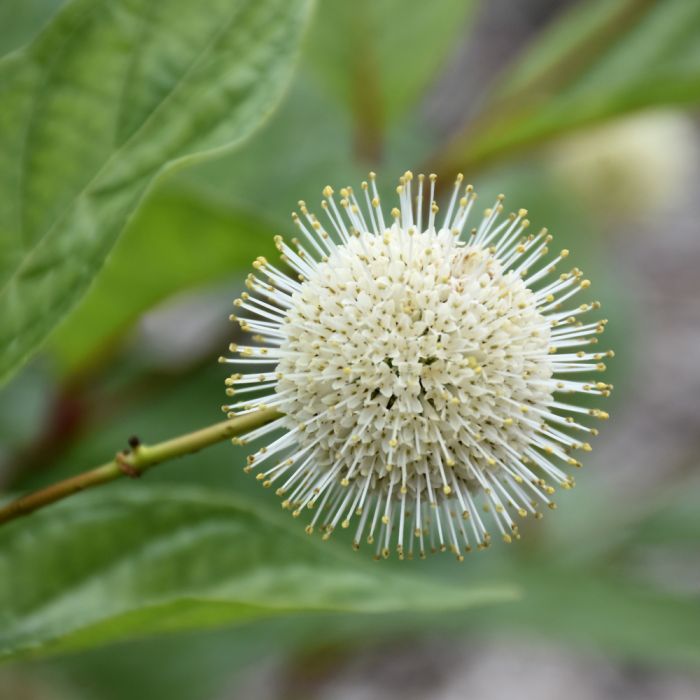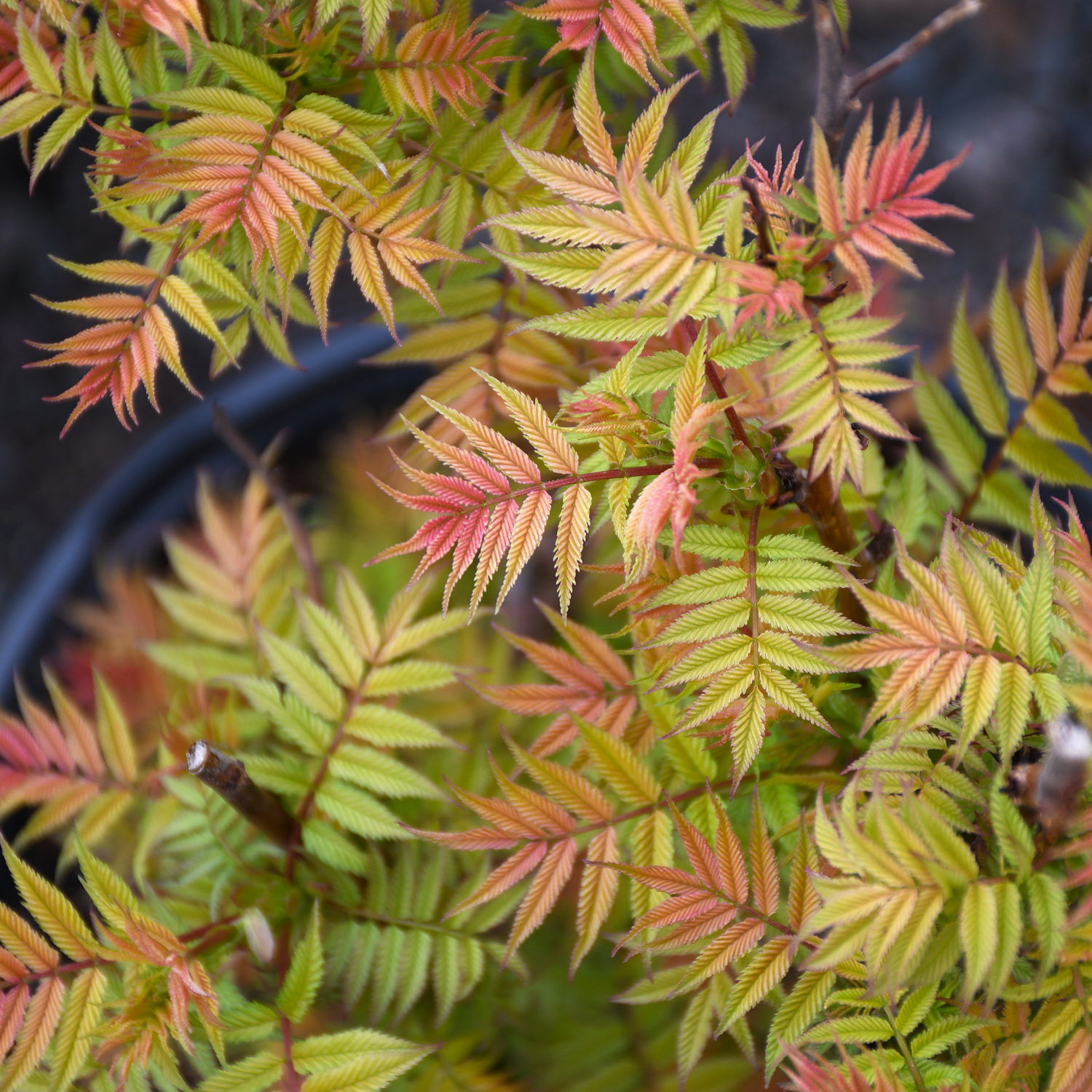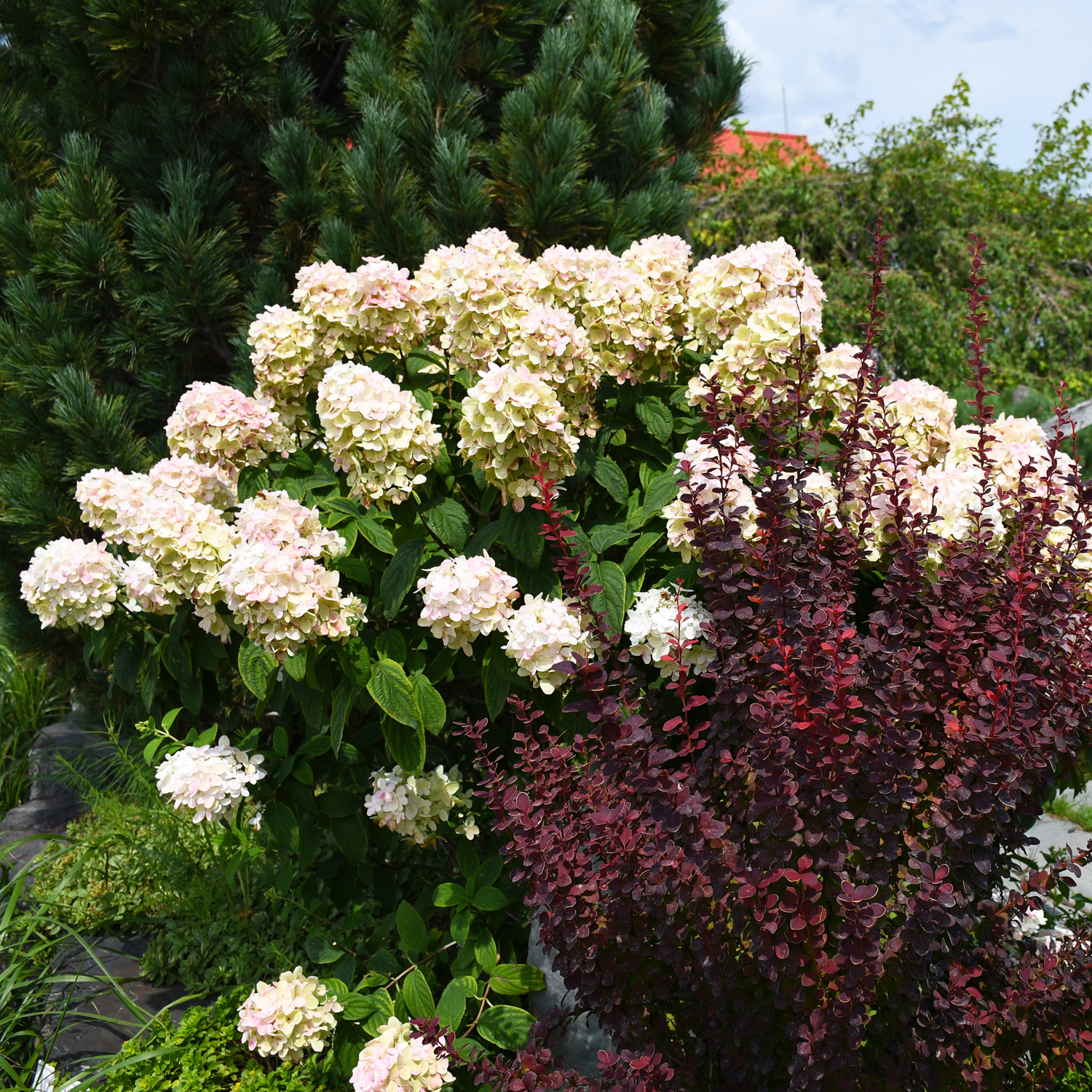Cephalanthus, Buttonbush 'First Editions® Fiber Optics®'


Out of stock
Coming soon, still growing- Sun Preference
- Full-Sun
- Bloom Time
- June, July, August
Description
An interesting shrub with most unusual flowers, hundreds of tiny tubular flowers packed into a ball; a great conversation piece when in bloom; fruit persists into winter and add interest; an excellent choice for very wet sites.
Minnesota's Largest Selection of Shrubs
Elevate your landscaping with Gertens' unmatched variety of shrubs! Selecting the right shrubs for your backyard can enhance its beauty and functionality. Consider factors like sunlight, soil type, and mature size when choosing shrubs. For sunny areas, flowering shrubs like roses or hydrangeas can add color and charm. In shady spots, opt for shrubs like azaleas or hostas. Evergreen shrubs provide year-round interest and privacy, while deciduous shrubs offer seasonal color changes. At Gertens, we offer a wide selection of shrubs to suit every backyard need.
Details
Height: 5 feet
Spread: 5 feet
Sunlight: ![]()
![]()
Hardiness Zone: 4b
Other Names: Button Willow, Honey Bells
Group/Class: First Editions Series
Description:
An interesting shrub with most unusual flowers, hundreds of tiny tubular flowers packed into a ball; a great conversation piece when in bloom; fruit persists into winter and add interest; an excellent choice for very wet sites
Ornamental Features
First Editions® Fiber Optics® Button Bush features unusual racemes of fragrant creamy white ball-shaped flowers along the branches from early to late summer, which emerge from distinctive buttery yellow flower buds. It has green foliage throughout the season. The glossy pointy leaves turn coppery-bronze in fall. The red fruits are held in clusters in mid fall.
Landscape Attributes
First Editions® Fiber Optics® Button Bush is a multi-stemmed deciduous shrub with a more or less rounded form. Its average texture blends into the landscape, but can be balanced by one or two finer or coarser trees or shrubs for an effective composition.
This shrub will require occasional maintenance and upkeep, and is best pruned in late winter once the threat of extreme cold has passed. It is a good choice for attracting bees and butterflies to your yard. It has no significant negative characteristics.
First Editions® Fiber Optics® Button Bush is recommended for the following landscape applications;
- Mass Planting
- General Garden Use
- Naturalizing And Woodland Gardens
- Bog Gardens
Planting & Growing
First Editions® Fiber Optics® Button Bush will grow to be about 5 feet tall at maturity, with a spread of 5 feet. It tends to fill out right to the ground and therefore doesn't necessarily require facer plants in front, and is suitable for planting under power lines. It grows at a fast rate, and under ideal conditions can be expected to live for approximately 20 years.
This shrub does best in full sun to partial shade. It prefers to grow in moist to wet soil, and will even tolerate some standing water. It is not particular as to soil type or pH. It is highly tolerant of urban pollution and will even thrive in inner city environments. This is a selection of a native North American species.
| SKU | Container Size |
| S0805 | #2 Container (2 Gallon) |
| S0806 | #5 Container (5 Gallon) |
* Not all container sizes may be available at this time. See store for details on specific container size availability.
More Information
| Gerten Grown Plants | Gerten Grown Plants |
|---|---|
| Available for Pre-Order | No |
| Bloom Time | June, July, August |
| Sun Preference | Full-Sun |
| Mature Height (Range) | 5 - 10 feet |
| USDA Hardiness Zone | 4, 5, 6, 7, 8, 9 |
| Common Family Name | Buttonbush |





